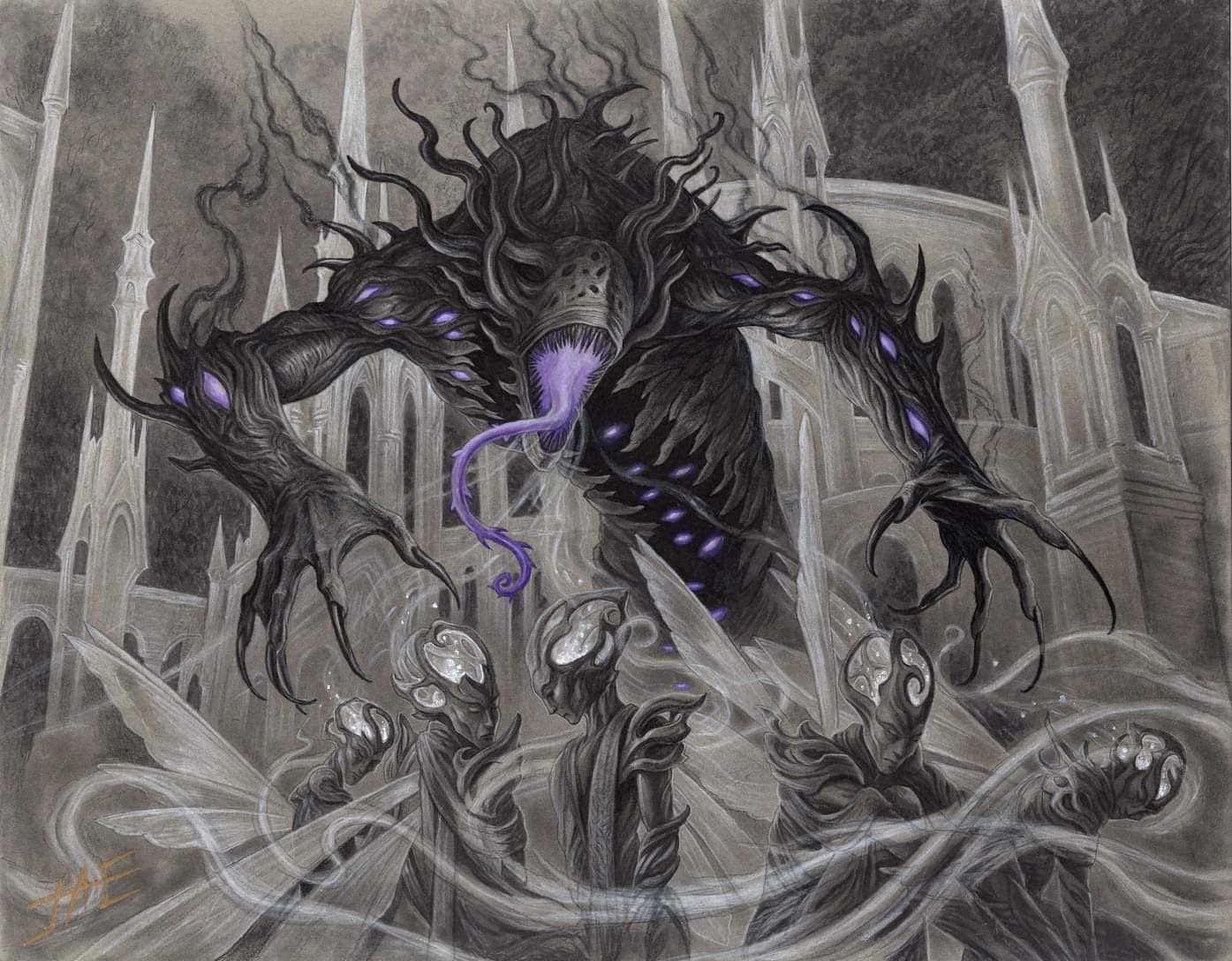Menu

0
Your Cart is Empty

Your Cart is Empty

August 04, 2023 3 min read 0 Comments
As a devoted player, you are already aware that the pleasure of discovering new cards goes beyond the excitement of winning battles. The true magic lies in the combination of stunning artwork and the mechanics of each card. What could be more thrilling than admiring complex illustrations that not only captivate the eye but also provide tantalizing hints about their hidden powers? In this article, we celebrate the artistry of Magic: The Gathering, exploring how talented artists weave their enchanting tales, leaving subtle clues that pique our interest in the cards' gameplay.

The artwork for "Ministrant of Obligation" is cleverly linked to its triggered ability, "Afterlife 2." The two spirits in the artwork are connected to the Orzhov Syndicate by not-so-subtle chains, which represent their affiliation. Additionally, the presence of coins and coin-like objects emphasizes the Syndicate's enduring belief that wealth is a source of power. This intricately designed artwork immerses players in the world of the Orzhov, providing a glimpse of the mystical spirits bound by both ethereal and material ties.

Sephara, Sky's Blade can be cast for one white mana and by tapping four untapped creatures. The card's mechanics and artwork are closely linked. The four swords swirling around Sephara represent the four creatures required to cast her using her alternative cost. This visual connection reinforces the thematic harmony between the gameplay and the artwork. Additionally, Sephara's headpiece has four links, which further emphasizes the need to tap four creatures. This clever detail seamlessly integrates the artwork with the strategic aspect of the card's casting condition.

Ghoulcaller Gisa exemplifies the classic approach of positioning the creatures she creates directly behind her in the artwork. These 2/2 zombies are brought into play through the sacrifice of another creature, and interestingly, the card doesn't specify non-token creatures. A notable detail in the artwork is Gisa's shovel, which goes beyond mere functionality, doubling as an ornamental element. This captivating addition to the artwork doesn't directly relate to the card's text box, but it adds a delightful touch to Gisa's character, enhancing the overall visual storytelling and enriching the card's thematic appeal.

Witch's Cauldron requires sacrificing a creature to activate it. Upon closer inspection of the artwork, a charming detail emerges: the witch in the illustration is dropping a newt into the cauldron. This detail is significant in folklore, as newts are often used in witches' brews. The artwork's clever inclusion of this traditional element adds a delightful touch, evoking the enchanting world of magic and mystical concoctions.

Kazuul, an imposing 5/4 Ogre Warrior in Magic: The Gathering, has a unique defensive ability. He comes with his own "meat shield." When you are the defending player, Kazuul summons a 3/3 Ogre before blockers are declared. You can choose to use this newly summoned Ogre to absorb attacks instead of Kazuul himself. This strategic aspect adds depth to the game, giving you an interesting decision of when and how to use the additional Ogre as a protective buffer for Kazuul, Tyrant of the Cliffs. Look closely you’ll see the 3/3 "helper" Ogre is connected to Kazuul by a chain, symbolizing its role as a devoted follower dutifully trailing its leader.

Makeshift Munitions tells the story of resourceful pirates who have run out of cannonballs. These clever buccaneers discover that cannons can fire anything you load into them, so they decide to repurpose some of their plundered loot. After all, if they don't make it to the next port, the loot is worthless. The artwork vividly depicts this daring scene, showing a pirate monkey stuffing a statue head into a cannon, while other statue heads await their turn to be used as makeshift ammunition on the ship's deck. This delightful visual narrative not only complements the card's mechanics but also immerses players in the thrilling life of adventurous pirates, embracing the spirit of ingenuity and resourcefulness on the high seas.
As we examined the intricate artwork, we found that the talented artists who created these cards skillfully embedded hints and clues about their mechanical prowess. The excitement of discovering cards with stunning illustrations that also foreshadow their strategic potential increases our anticipation for each new set release. From the grand cathedrals of the "Ministrant of Obligation" to the cunning tactics of "Kazuul, Tyrant of the Cliffs," each card's art captures the essence of its gameplay, inviting players to immerse themselves in a world of magic and adventure. Embracing an art-focused approach to card appreciation enhances our connection to this timeless game, reminding us that in Magic: The Gathering, the allure of the cards lies not just in their power, but in the artistry that brings them to life.
Sign up to get the latest on sales, new releases and more …